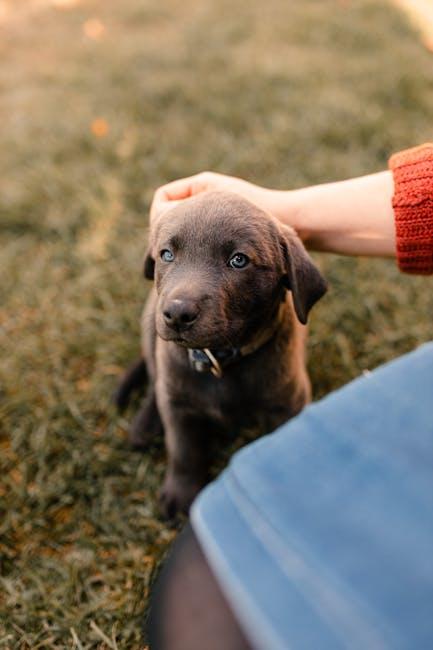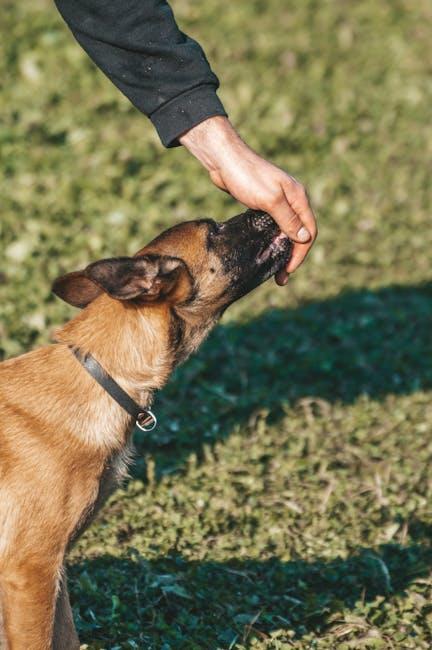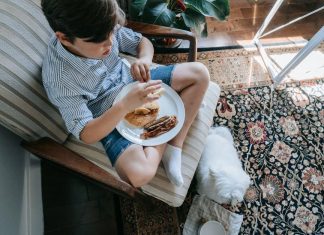Welcoming a puppy into your home is an exciting and heartwarming experience, filled with playful moments and the promise of a loyal companion by your side. However, this joyful journey also brings the important responsibility of shaping your puppy’s behavior to ensure a harmonious and happy coexistence. Training your puppy is not just about teaching commands; it’s about building a foundation for a lifetime of good behavior, trust, and mutual understanding. In this guide, we’ll explore the essential steps and gentle techniques that will help you nurture your puppy into a well-behaved, confident, and loving member of your family. With patience, consistency, and a warm approach, you’ll embark on a rewarding adventure that strengthens the bond between you and your furry friend. Let’s begin this journey of transformation and discover the joy of raising a well-mannered puppy who enriches your life every day.
Building Trust and Understanding Your Puppys Unique Needs
Establishing a bond with your puppy is crucial for successful training and fostering a harmonious relationship. Trust forms the foundation of this bond. Begin by spending quality time together through play, gentle petting, and even quiet moments where your puppy feels safe and secure. Pay attention to their body language and vocal cues, as these are your puppy’s way of communicating their feelings and needs. By responding appropriately to these signals, you demonstrate that you respect and understand them, reinforcing trust.
Understanding your puppy’s individual personality and requirements is equally important. Every puppy is unique, and their training should reflect that. Consider factors such as:
- Breed characteristics: Some breeds are more energetic and require plenty of exercise, while others may be more laid-back.
- Temperament: Is your puppy shy or outgoing? Adapt your training methods to suit their personality.
- Learning style: Some puppies may respond better to visual cues, while others prefer verbal commands.
By customizing your approach, you not only make the training process more effective but also deepen the bond between you and your puppy, ensuring a lifetime of good behavior and mutual understanding.

Establishing a Consistent Routine for Effective Training
Creating a regular schedule is essential to your puppy’s development and helps establish a foundation for lifelong good behavior. Consistency is key; it allows your furry friend to understand what is expected and when. Start by designing a daily routine that incorporates training sessions at the same time each day. This helps your puppy anticipate and prepare for learning, making the process smoother and more enjoyable for both of you.
- Morning Routine: Begin with a short walk and a bathroom break to get your puppy energized and focused.
- Mealtime Training: Use meal times as an opportunity to practice basic commands like “sit” and “stay.”
- Play and Socialization: Incorporate playtime with socialization activities to enhance your puppy’s interaction skills.
- Evening Wind-Down: Conclude with a gentle training session and a calming routine to prepare for bedtime.
By maintaining a structured routine, you not only reinforce positive behaviors but also strengthen the bond with your puppy. Remember, patience and consistency are your best tools in guiding your puppy toward becoming a well-mannered adult dog.

Positive Reinforcement Techniques to Encourage Good Behavior
Building a foundation of positive behavior in your puppy begins with reinforcing the actions you want to see more of. Puppies are eager to please and respond best to encouragement that feels rewarding. Here are some effective techniques to consider:
- Use Treats Wisely: Offer small, tasty treats to your puppy immediately after they perform the desired behavior. This creates a clear connection between the action and the reward.
- Verbal Praise: Pair treats with enthusiastic verbal affirmations. A joyful “Good job!” or ”Well done!” reinforces that your puppy’s actions are making you happy.
- Consistency is Key: Always reward the good behavior promptly and consistently. This helps your puppy understand which actions are desirable and should be repeated.
- Timing Matters: The reward must follow the action closely. Delayed rewards may confuse your puppy about which behavior is being praised.
- Gradual Fading: As your puppy learns and grows, gradually reduce the frequency of treats while maintaining verbal praise, ensuring they remain motivated to behave well without always expecting a treat.
By focusing on these positive reinforcement strategies, you create a loving and supportive environment that encourages your puppy to learn and thrive. Remember, patience and consistency are your best tools in guiding your furry friend toward a lifetime of good behavior.

Addressing Common Behavioral Challenges with Patience and Care
When embarking on the journey of training your puppy, it’s essential to approach common behavioral challenges with a mindset of patience and care. Puppies, much like children, are constantly learning and absorbing the world around them. They are bound to make mistakes as they explore and grow. During this time, your response to these challenges can set the tone for your puppy’s lifelong behavior.
- Stay Calm: Puppies are incredibly intuitive and can sense your emotions. If you react with frustration, it might confuse or scare them. Instead, take a deep breath and address the situation calmly.
- Consistency is Key: Make sure every family member is on the same page regarding the rules and boundaries set for your puppy. Consistent commands and expectations help your puppy understand what is acceptable.
- Positive Reinforcement: Celebrate small victories with treats or praise. Puppies respond well to positive feedback, which encourages them to repeat good behavior.
- Understanding Triggers: Observe what might be causing unwanted behavior. Is your puppy chewing furniture because they’re teething, or are they barking out of boredom? Identifying triggers allows you to address the root of the issue rather than just the symptom.
Remember, the goal is to foster a nurturing environment where your puppy feels safe to learn and grow. By addressing behavioral challenges with patience and care, you are setting a foundation for a harmonious relationship built on trust and mutual understanding.















